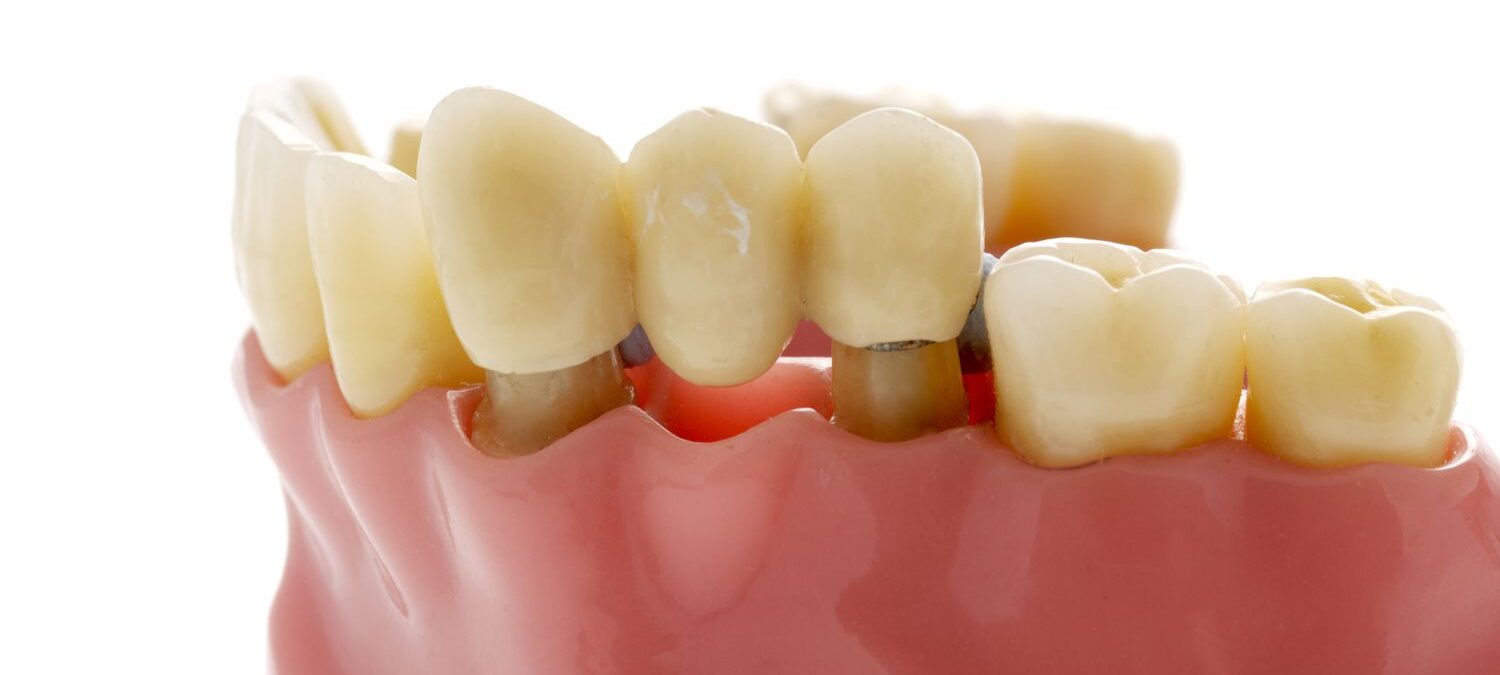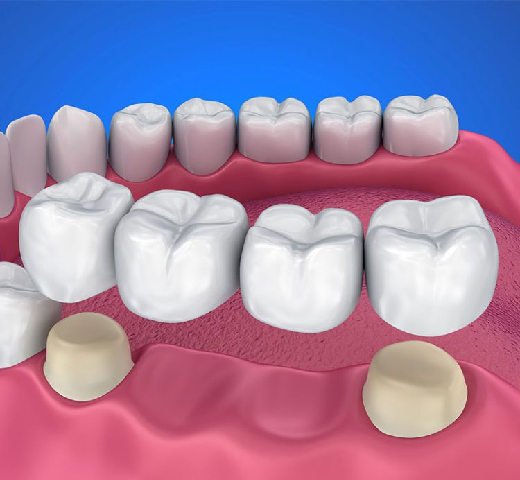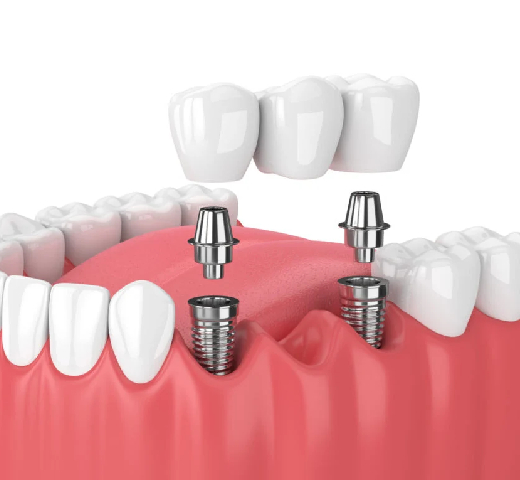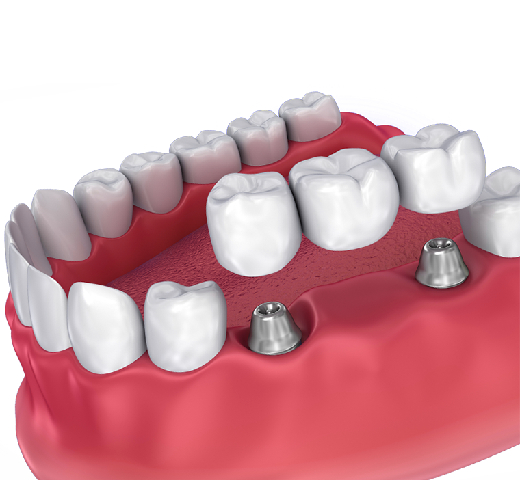
A Crown Bridge, commonly referred to as a fixed dental bridge, is a restorative dental procedure used to replace one or more missing teeth. It consists of two or more crowns that are fitted on the teeth adjacent to the gap (these anchoring teeth are known as abutment teeth) and a false tooth/teeth (pontics) in between. These crowns and pontics are custom-made to match the natural color and shape of the patient’s teeth, ensuring a seamless blend with the dental arch. Fixed bridges are made from various materials, including porcelain fused to metal, ceramics, or gold, offering both functional and aesthetic benefits.
This procedure restores the ability to chew and speak properly, maintains the shape of the face, prevents remaining teeth from drifting out of position, and helps distribute the forces in your bite correctly.
Crown Bridge (Fixed Teeth) F&Q
A Crown Bridge, or fixed dental bridge, is a restorative treatment used to replace one or more missing teeth by anchoring artificial teeth (pontics) to adjacent natural teeth or implants with dental crowns.
Unlike dental implants, which are surgically inserted into the jawbone, a Crown Bridge uses existing teeth or implants as supports for the artificial teeth, without the need for surgery directly into the jawbone.
Crown Bridges can be made from a variety of materials, including porcelain, ceramics, porcelain fused to metal (PFM), or gold. The choice depends on the location of the missing tooth, function, aesthetic considerations, and cost.
With proper care, including good oral hygiene practices and regular dental check-ups, Crown Bridges can last 5 to 15 years or even longer. Their longevity can be affected by the materials used, the position in the mouth, and the patient’s dental habits.
Crown Bridges restore dental functionality and appearance by filling gaps, supporting facial structure, preventing remaining teeth from shifting, and distributing bite forces properly. They also offer a quicker, less invasive alternative to dental implants.
The procedure typically involves two main visits: during the first visit, the abutment teeth are prepared by removing a portion of enamel to allow room for a crown. Impressions of the teeth are then taken to create a custom bridge. A temporary bridge is placed to protect the exposed teeth and gums. On the second visit, the temporary bridge is removed, and the new permanent bridge is adjusted and cemented into place, ensuring a proper fit and comfortable bite.












